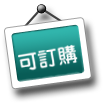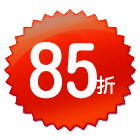超越語法與認字框架,回到語言的真實交流
?
這本書是為了以下幾種想學習華語的族群而編寫的:
?
1. 短期來臺灣出差、進修、訪問的外國人。
2. 剛來臺灣不久,準備長居的外國人。
3. 打算在臺灣數位遊牧、生活一段時間的外國人。
4. 很想報名華語課程,但是目前無法每週安排固定時間上課的外國人。
5. 已經在上華語課程,但是覺得傳統正式教材內容偏厚重,想先輕量學習基礎生活華語的外國人。
6. 針對以上族群授課的華語老師。
?
根據2025年的資料,在臺灣工作的外國人,大約有80∼90萬人,當中包括專業工作者、勞動工作者等。
?
不過目前臺灣市面上的華語教材,大多是針對「能夠每週上課8小時以上、密集學習華語」的「全職學生」而設計。編排順序大多遷就語法難易度,以致於許多外國人來臺灣第一週,就需要天天使用的「問題清單」,例如:「你來臺灣多久了?」、「怎麼用悠遊卡和載具?」、「注音符號和漢語拼音有什麼不一樣?」,都因為語法結構,反而要在比較後面的課堂才學得到。
?
筆者從事華語教學將近20年的時間,加上另一半也是一個長期在臺灣生活的職場人士,我發現「全職工作、工作之餘學華語」的族群,需要的教材設計是:
?
1. 夠解決生存需求的短課文:
提供來臺灣後,一走出機場就要體驗到的便利商店、飲料店、臺式餐廳、咖啡店等文章對話,讓學習者先能用極簡華語表達基本需求,立即應用在真實生活中,同時建立自信。
2. 夠貼近職場大人的短對話:
例如第一天上班,就要面對的辦公室場景,包含自我介紹、討論臺灣獨有的注音符號鍵盤等會話,讓學習者即使以最基礎的華語表達,也能與同事產生互動,體驗語言帶來的連結感。
3. 夠融入在地文化的短社交:
囊括跟臺灣人聊臺灣的交通特色、高度安全的生活環境、極為便利的生活機能等互動內容,讓學習者在日常交流中逐漸認識臺灣文化,與在地生活產生連結,進而培養對臺灣的認同感。
4. 夠簡化語法結構的短解說:
例如「了」其實是一個對初學者來說有難度的語法詞,但是剛來臺灣其實只要能說「我來臺灣三天了」就能跟臺灣人進行一小段有意義的社交交流。也就是說,本書提供了許多技巧,讓讀者藉此跳過複雜語法,便能達到溝通目的,更能提升學習成就感。
5. 夠重複而不機械的短練習:
每一課只安排學習者在30分鐘之內就能完成的練習題,部分題型看似稍有重複,不過這就是初學者將全新語言資訊內化所需要的練習量。
?
另外,全書包含課文、生詞、例句、練習題、解答,100%附漢語拼音,如果學習者暫時不學認字,仍可以完整學習。而練習題也可全部用拼音或錄音、錄影給老師的形式來完成。
?
除上述之外,每一課最後都附有短篇的「文化筆記」。雖然用字稍微超過初學者能力範圍,但本部分的用意不在語言知識本身,而是傳遞與該課相關的臺灣在地生活習慣或觀點。如果學習者程度較進階,可利用本單元和臺灣人進行更多交流;如果是完全的初學者,在透過本單元認識另外一個層面的臺灣文化後,也可用英文或其他語言,增加和臺灣或是國際友人的社交話題。
?
總結來說,本書是以「解決來臺灣之外國人首先要面對到的基礎生活對話」為編排核心,希望學習者能先「用極簡華語短句,在臺灣進行口語溝通」,再回頭檢視這些口語社交內容的語法結構,甚至是漢字認讀、書寫,相信如此一來,學習上會更有動機,事半功倍。
?
願更多來臺灣的國際友人,透過本書,有機會回歸語言學習的本質,從「聽、說」的溝通意圖出發,暫時跳過「讀、寫」的高門檻,能夠自信地開口說華語,融入臺灣生活,享受與臺灣深度連結的樂趣。
?
新竹雲飛語言文化中心創辦人 游皓雲(Yolanda Yu)
?
?
Beyond Grammar and Characters — Back to Real Communication
?
This book is written for the following groups of Taiwanese Mandarin learners:
?
1. Those who come to Taiwan for short-term business trips, study programs, or academic visits.
2. Those who have just arrived in Taiwan and plan to settle down.
3. Digital nomads who plan to stay and live in Taiwan for a period of time.
4. Learners who wish to study Taiwanese Mandarin but cannot commit to regular weekly classes.
5. Students already taking Taiwanese Mandarin courses who find traditional textbooks too heavy and wish for lighter, practical content.
6. Taiwanese Mandarin teachers who teach learners from the above groups.
?
According to data from 2025, there are approximately 800,000 to 900,000 foreigners working in Taiwan, including both professionals and labor workers.
?
However, most Taiwanese Mandarin textbooks available in Taiwan are designed for full-time students who can study intensively for more than eight hours per week. Their structure tends to follow grammatical difficulty rather than real-life needs. As a result, many practical questions foreigners face during their first week in Taiwan—such as “How long have you been in Taiwan?”, “How do I use an EasyCard or e-invoice carrier?”, or “What’s the difference between Zhuyin and Hanyu Pinyin?”—are only introduced in much later lessons.
?
Having taught Taiwanese Mandarin for nearly 20 years—and being married to someone who has long worked in Taiwan—I have discovered that working adults who study Taiwanese Mandarin part-time need a very different type of textbook:
?
1. Short texts that meet survival needs:
Dialogues set in everyday places—like convenience stores, drink shops, Taiwanese restaurants, and cafes—help learners use simple Chinese to express basic needs, apply what they learn immediately, and build confidence through real communication.
2. Short dialogues relevant to workplace adults:
Office scenes such as self-introductions or discussing Taiwan’s Zhuyin keyboard help learners engage with colleagues using very simple Chinese, making the first step toward workplace communication and connection.
3. Short social exchanges that connect to local culture:
Topics such as Taiwan’s transportation system, safe living environment, and high convenience level allow learners to engage in meaningful cultural conversations, form local connections, and develop a sense of belonging in Taiwan.
4. Simplified grammar explanations:
Some grammar points, such as le (了), are challenging for beginners. Yet even a simple sentence like “I’ve been in Taiwan for three days” can already enable meaningful interaction. This book offers practical shortcuts that allow learners to communicate effectively and feel a stronger sense of achievement.
5. Short, repetitive but engaging practice:
Each lesson includes exercises that can be completed within 30 minutes. While some activities are intentionally repetitive, this repetition helps beginners internalize new language patterns naturally.
?
The book includes texts, vocabulary, sample sentences, exercises, and answer keys—all fully annotated with Hanyu Pinyin. Learners who are not yet ready to read characters can still study effectively. All practice tasks can be completed using Pinyin, audio, or video recordings, offering maximum flexibility.
?
At the end of each lesson, a short “Cultural Note” provides background on Taiwanese habits and perspectives. Though slightly above beginner level, its purpose is cultural, not grammatical. Advanced learners can use it to deepen discussions with locals, while beginners can gain cultural awareness and new topics for conversation with Taiwanese and international friends.
?
In short, this book is structured around the real-life conversations that foreigners in Taiwan most urgently need. Learners are encouraged to start communicating right away with simple Taiwanese Mandarin sentences. Once confident in speaking, they can naturally revisit grammar, reading, and writing—with stronger motivation and better results.
?
May more international friends in Taiwan rediscover the essence of language learning—starting from listening and speaking. Even without focusing on reading and writing at first, learners can confidently use Taiwanese Mandarin, integrate into daily life, and enjoy the joy of truly connecting with this beautiful island.
?
? Yu Hao Yun (Yolanda Yu)
Founder, YunFei Language & Culture Center, Hsinchu
?

